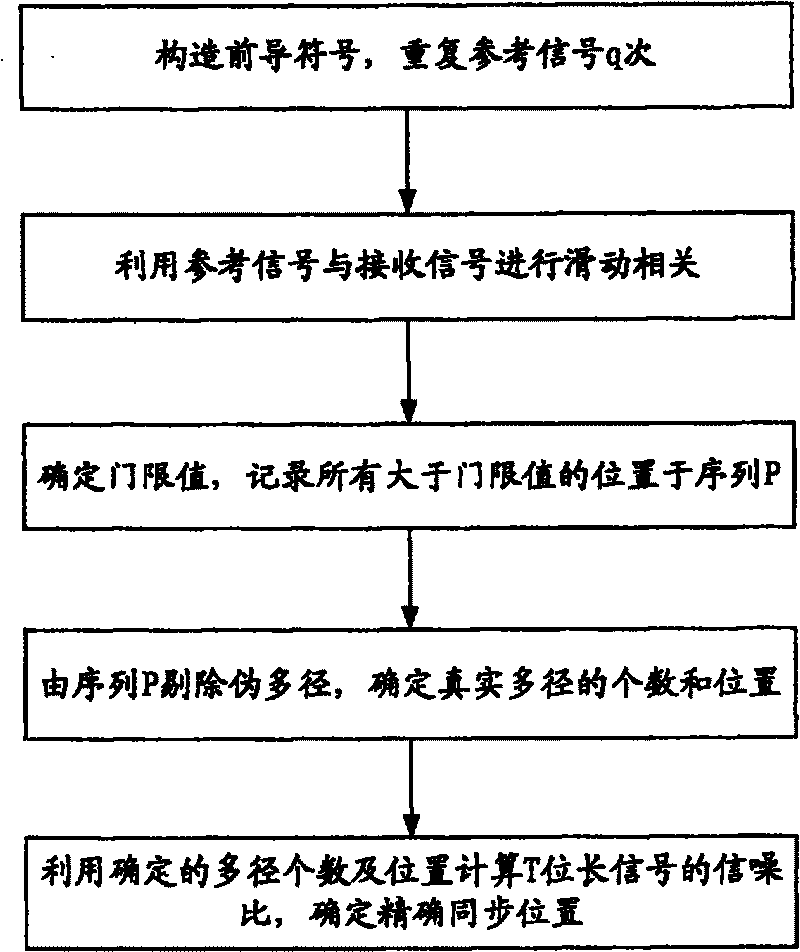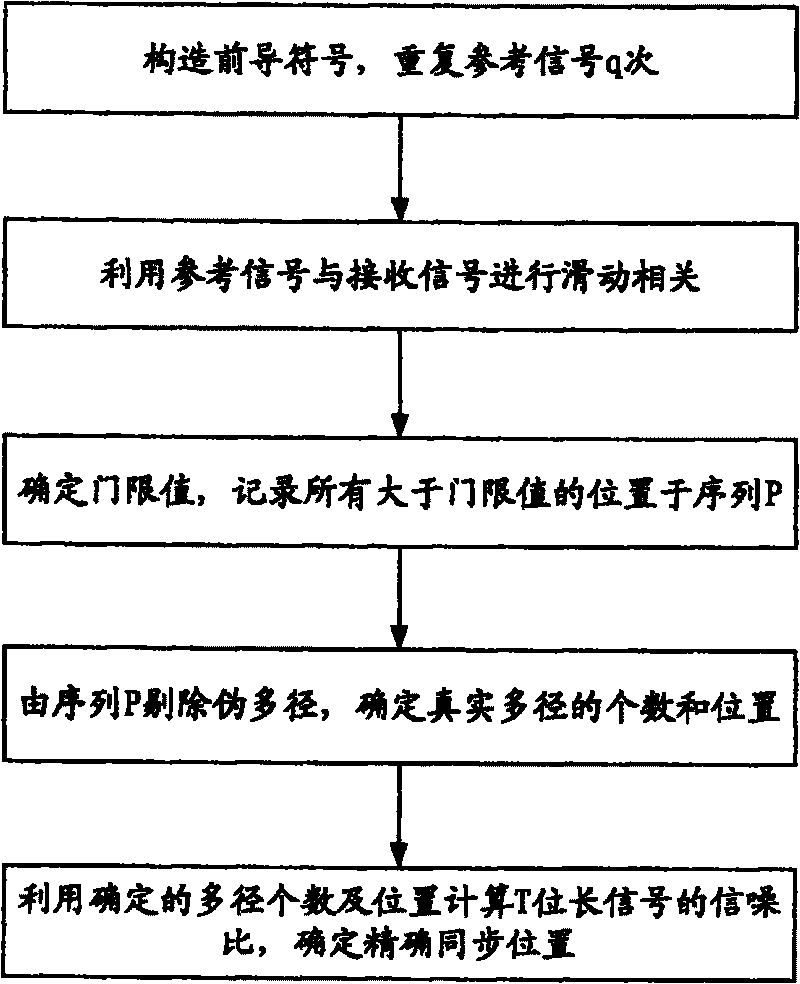Method of implementing multi-input multi-output orthogonal frequency division multiplexing system time synchronization
An orthogonal frequency division and system time technology, applied in the direction of multi-frequency code system, etc., can solve the problems of very high time and frequency synchronization requirements, difficulty in judging the symbol synchronization time, and too much system resource consumption, so as to be suitable for real-time processing , Improve the operation speed and reduce the amount of operation
- Summary
- Abstract
- Description
- Claims
- Application Information
AI Technical Summary
Problems solved by technology
Method used
Image
Examples
Embodiment Construction
[0027] The method of the invention will be described in detail below in conjunction with the accompanying drawings.
[0028] According to the method of the present invention, constructing a special repeated reference sequence preamble at the transmitting end, using a known reference sequence at the receiving end to obtain correlation, obtaining a peak sequence according to a threshold, and counting peak positions in different windows to remove false multipath, according to The signal-to-noise ratio finally obtains the precise time-synchronized position. These steps are interconnected, and the peak correlation module before the calculation and comparison of the false multipath is removed and the signal-to-noise ratio is corrected to directly obtain an accurate time-synchronized estimation.
[0029] figure 2 It is a flowchart of the specific implementation process of the method of the present invention.
[0030] Assuming that MIMO+OFDM includes M transmitting antennas and N re...
PUM
 Login to View More
Login to View More Abstract
Description
Claims
Application Information
 Login to View More
Login to View More - R&D
- Intellectual Property
- Life Sciences
- Materials
- Tech Scout
- Unparalleled Data Quality
- Higher Quality Content
- 60% Fewer Hallucinations
Browse by: Latest US Patents, China's latest patents, Technical Efficacy Thesaurus, Application Domain, Technology Topic, Popular Technical Reports.
© 2025 PatSnap. All rights reserved.Legal|Privacy policy|Modern Slavery Act Transparency Statement|Sitemap|About US| Contact US: help@patsnap.com



